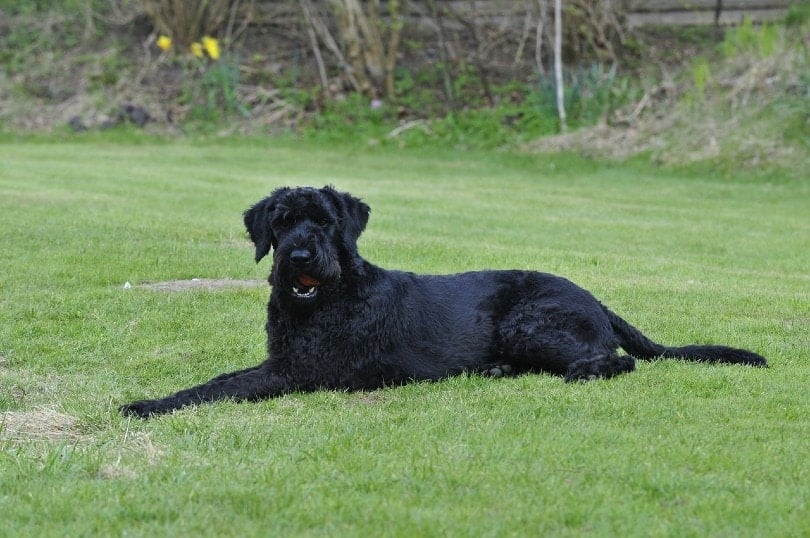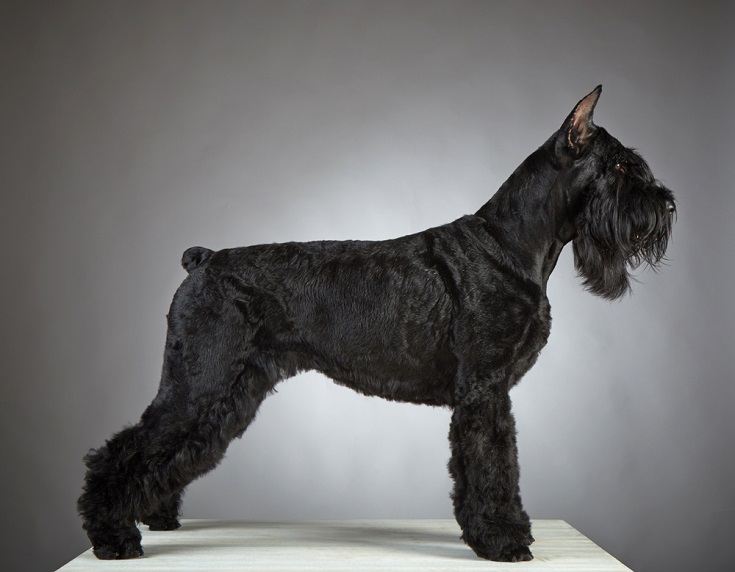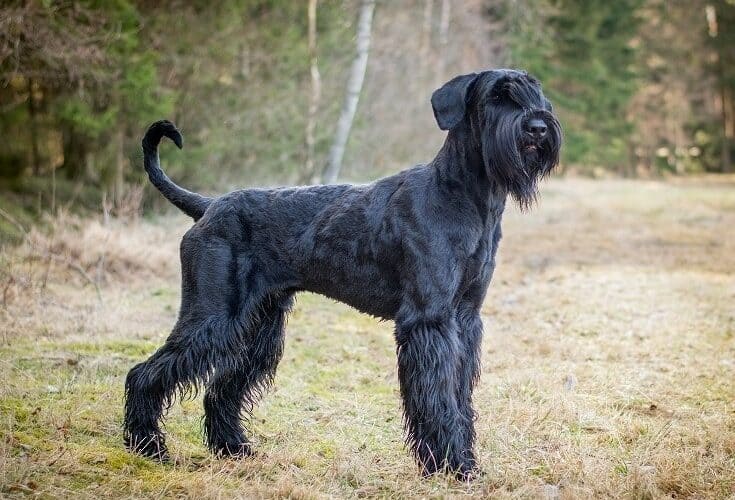There’s nothing quite as regal as the Giant Schnauzer. With their impressive size and stature, this breed is sure to capture anyone’s attention. Schnauzers are well known for being considered hypoallergenic dogs, which is an attractive characteristic for allergy sufferers that love large, loyal, devoted dogs. Are they really hypoallergenic, though?
While no dog is considered 100% hypoallergenic, Giant Schnauzers are one of the breeds that make a great choice for those with allergies because they produce less dander, are low shedders, and produce little drool. Let’s look further into dog allergies and why the Giant Schnauzer may be a great fit for households with dog allergy sufferers.
The Truth Behind the Term “Hypoallergenic”
The term hypoallergenic can be a bit misleading. This term was initially coined as a marketing tactic in the 1950s and is still prevalently used to this day. While many people associate the term with a complete lack of allergens, the definition of hypoallergenic is “relatively unlikely to cause an allergic reaction.”
All dogs produce allergens. When a dog breed is deemed hypoallergenic, it simply means that this particular breed produces a lower amount of allergens than others, making them more suitable for a home with those that suffer from dog allergies. But, there is no such thing as a non-allergenic dog.
A Guide to Dog Allergies
According to the Asthma and Allergy Foundation of America, as many as 3 out of 10 people with allergies will have an allergic reaction to cats and dogs. While cat allergies are much more common than dog allergies, dog allergies certainly do exist and plague many dog lovers.

The Cause of Dog Allergies
Allergies are the result of an immune response to a foreign substance. It is the function of the immune system to fight off and destroy foreign invaders, which are typically in the form of viruses or bacteria. In the case of allergies, the immune system is overly sensitive and has identified harmless proteins as a potential threat, causing the allergic reaction.
A common misconception with dog allergies is that the hair itself is the root of all evil. That’s simply not true. The immune system is reacting to the proteins in the dog’s dander, saliva, and even urine. Contact with the protein in these substances is what triggers the allergic reaction. Dogs that shed heavily will release more particles of dander into the air, but the hair is not the culprit.
Symptoms of Dog Allergies
Symptoms of dog allergies are variable. Symptoms can range from mild to severe and may even change over time. Different individuals will experience allergic reactions differently. Here’s a list of symptoms associated with dog allergies:
- Sneezing
- Runny nose
- Itchy, red, or watery eyes
- Nasal congestion
- Itchy nose, the roof of the mouth, or throat
- Postnasal drip
- Cough
- Facial pressure and pain
- Trouble sleeping
- Swollen, blue-colored skin under your eyes
- In a child, frequent upward rubbing of the nose
- Difficulty breathing
- Chest tightness or pain
- Whistling or wheezing sound when exhaling
- Trouble sleeping caused by shortness of breath, coughing/wheezing
Diagnosis and Treatment of Pet Allergies
To confirm the presence of pet allergies, allergy testing will need to be completed by a licensed physician, typically in the form of a skin prick test. The test will expose the individual to a wide variety of allergens and diagnosis will be based on the immune response to certain allergens.
Once an allergy is confirmed, there are different treatment options available to help ease and control symptoms. This includes medication, allergy shots, and keeping yourself far from known allergens. You’ll want to speak to your doctor about the best course of action regarding treatment. Most animal lovers opt for breeds that are considered hypoallergenic to reduce exposure, others may choose from many treatment options.

The Giant Schnauzer for Allergy Sufferers
There is some misinformation out there stating that the Giant Schnauzer does not shed. This breed does shed, just not heavily. Their low shedding causes them to release much less dander than more heavily shedding breeds, thus reducing the number of allergens in the air.
As mentioned, the proteins in dog drool and urine are also common allergens in addition to the dander. The Giant Schnauzer does not drool heavily and is fairly easy to potty train for outside bathroom breaks. This also reduces allergens within the household, which has led to the breed’s “hypoallergenic” status.
This makes the breed a great choice for those that suffer from dog allergies or for families with someone in the home that does. It’s always recommended to know the ins and outs of the breed in terms of compatibility with the family and care requirements. It is also ideal to spend time with the breed before committing to ensure no severe allergic response is present.
Final Thoughts
While all dogs produce allergens and no dog is considered 100% “hypoallergenic,” the Giant Schnauzer breed is not a heavy shedder, does not drool a lot, and tends to go to the bathroom outside, leading them to release much fewer allergens than most other dog breeds. If you are interested in the Giant Schnauzer, make sure to research the breed and get in contact with a reputable breeder for more information.
Featured Image Credit: Shutterstock














